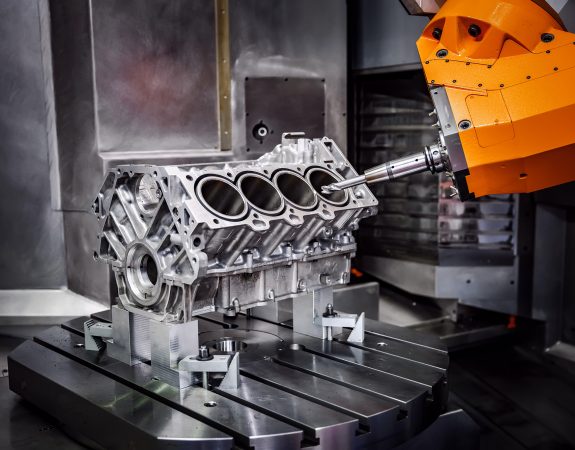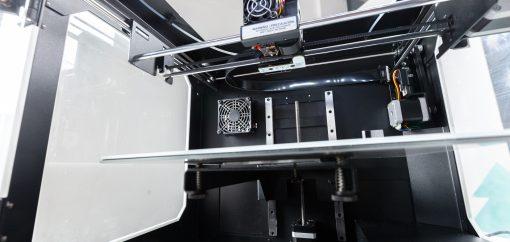
In today's fast-paced manufacturing landscape, rapid prototyping sheet metal techniques have emerged as essential tools for companies seeking to accelerate their product development cycles. As industries increasingly prioritize speed and efficiency, the ability to create high-quality prototypes using sheet metal allows for quick iterations, effective design validation, and significant cost savings. This blog will explore the top strategies for optimizing rapid prototyping with sheet metal, highlighting the advantages of leveraging advanced technologies and innovative processes. By embracing these techniques, manufacturers can enhance collaboration, reduce lead times, and ultimately drive better outcomes in their projects, positioning themselves as invaluable partners in the global marketplace. Join us as we delve into the best practices that will elevate your rapid prototyping efforts and ensure your business stands out in the realm of quality manufacturing.

In the fast-paced landscape of manufacturing, reducing lead time in sheet metal prototyping has become a critical competitive advantage. With an emphasis on accelerating production processes, achieving a 30% reduction in lead time by 2025 is not just ambitious—it's essential. According to a recent report by SME, 75% of manufacturers cite lead time as a significant factor influencing customer satisfaction. By optimizing rapid prototyping techniques, companies can not only meet but exceed expectations in a market that demands speed and efficiency.
One vital strategy involves leveraging advanced software for design and simulation, which can streamline the prototyping process. Research from McKinsey indicates that companies adopting these technologies can cut design time by up to 50%. Additionally, integrating automation into sheet metal fabrication, such as using CNC machines, allows for quicker turnaround times while maintaining precision. Reports suggest that automation can enhance production rates by nearly 30%, providing a clear pathway to achieving the ambitious lead time reduction goals set for 2025. By adopting these forward-thinking strategies, manufacturers can stay ahead in the increasingly competitive field of sheet metal prototyping.
The integration of additive manufacturing with traditional sheet metal techniques offers unprecedented opportunities for optimizing rapid prototyping. By combining these two methodologies, designers can leverage the strengths of each to create more complex and lightweight structures.
 For instance, additive processes can be employed to fabricate intricate geometries and features that would be challenging to achieve with conventional sheet metal forming alone. This synergy can significantly reduce lead times and material waste, ultimately streamlining the prototyping process.
For instance, additive processes can be employed to fabricate intricate geometries and features that would be challenging to achieve with conventional sheet metal forming alone. This synergy can significantly reduce lead times and material waste, ultimately streamlining the prototyping process.
Furthermore, the incorporation of 3D printing in sheet metal projects facilitates the customization of parts. Designers can quickly iterate designs based on real-time feedback, creating prototypes that are not only functional but also tailored to specific requirements. This adaptability ensures that products can better meet market demands without the prolonged timelines typically associated with fabrication processes. As industries continue to evolve, merging additive manufacturing with sheet metal techniques represents a pivotal step toward more efficient and flexible manufacturing workflows.
In the fast-evolving landscape of design, leveraging advanced CAD software has become essential for optimizing rapid prototyping, particularly in sheet metal techniques. Recent industry reports estimate that the global computer-aided design market will grow significantly, projecting a revenue increase from USD 11.40 billion in 2025 to USD 19.39 billion by 2033. This growth highlights the increasing reliance on sophisticated CAD tools to enhance design flexibility and performance.
Advanced CAD software plays a pivotal role in streamlining workflows, allowing designers to create precise models and iterate quickly. For instance, solutions that offer robust capabilities for DWG editing are invaluable for saving time on projects. Moreover, the introduction of flexible licensing options in CAD solutions has made high-performance tools accessible to a wider range of businesses, including those on a tighter budget. As trends continue to move toward more adaptable and user-friendly systems, engineers and designers need to harness these tools to push their prototyping capabilities to new heights, ensuring they remain competitive in a rapidly changing market.

The integration of real-time data analysis into rapid prototyping, particularly with sheet metal techniques, can significantly enhance prototyping efficiency. As industries increasingly adopt advanced data collection systems, the market is projected to reach $1.799 billion by 2025 and grow to $3 billion by 2033 at a compound annual growth rate of 6.6%. This growth underscores the importance of leveraging data analytics to streamline processes, reduce errors, and expedite development cycles in manufacturing settings.
Tips for optimizing rapid prototyping include implementing IoT sensors across your production line to gather valuable data which can be analyzed in real-time. This approach allows for immediate feedback, enabling teams to adjust and refine their prototypes based on performance metrics. Additionally, utilizing simulation software can provide insights into the impact of design changes before physical prototypes are created, significantly saving time and resources.
Moreover, fostering a culture of data-driven decision-making within your team will enhance collaboration and efficiency. Encourage team members to utilize data analytics to identify bottlenecks and optimize workflow processes, ultimately leading to a more agile prototyping strategy. By strategically embracing technology, companies can not only meet but exceed market demands while maintaining high standards of quality and innovation.
In the evolving landscape of manufacturing, sustainable practices are becoming paramount, particularly in sheet metal prototyping. According to a recent report by the National Institute of Standards and Technology (NIST), sustainable manufacturing can reduce energy consumption by up to 25%, thereby enhancing operational efficiency and compliance with future regulations. As industries move towards greener solutions, integrating environmental considerations into sheet metal prototyping processes is essential for compliance and market competitiveness.
To optimize rapid prototyping in a sustainable manner, consider employing advanced techniques such as laser cutting and waterjet machining. These methods not only minimize waste but also enable precision that reduces the need for rework. Additionally, using recyclable materials and remnant sheets can significantly lower material costs while promoting a circular economy.
Tip 1: Invest in software that enhances material optimization to reduce waste during the design phase.
Tip 2: Regularly evaluate the supply chain for sustainable material sources to ensure compliance with environmental standards.
By integrating sustainable practices in sheet metal prototyping, companies can not only align their operations with regulatory demands but also pave the way for innovative design solutions that meet consumer expectations for environmental responsibility.

| Cookie | Duration | Description |
|---|---|---|
| cookielawinfo-checkbox-analytics | 11 months | This cookie is set by GDPR Cookie Consent plugin. The cookie is used to store the user consent for the cookies in the category "Analytics". |
| cookielawinfo-checkbox-functional | 11 months | The cookie is set by GDPR cookie consent to record the user consent for the cookies in the category "Functional". |
| cookielawinfo-checkbox-necessary | 11 months | This cookie is set by GDPR Cookie Consent plugin. The cookies is used to store the user consent for the cookies in the category "Necessary". |
| cookielawinfo-checkbox-others | 11 months | This cookie is set by GDPR Cookie Consent plugin. The cookie is used to store the user consent for the cookies in the category "Other. |
| cookielawinfo-checkbox-performance | 11 months | This cookie is set by GDPR Cookie Consent plugin. The cookie is used to store the user consent for the cookies in the category "Performance". |
| viewed_cookie_policy | 11 months | The cookie is set by the GDPR Cookie Consent plugin and is used to store whether or not user has consented to the use of cookies. It does not store any personal data. |

